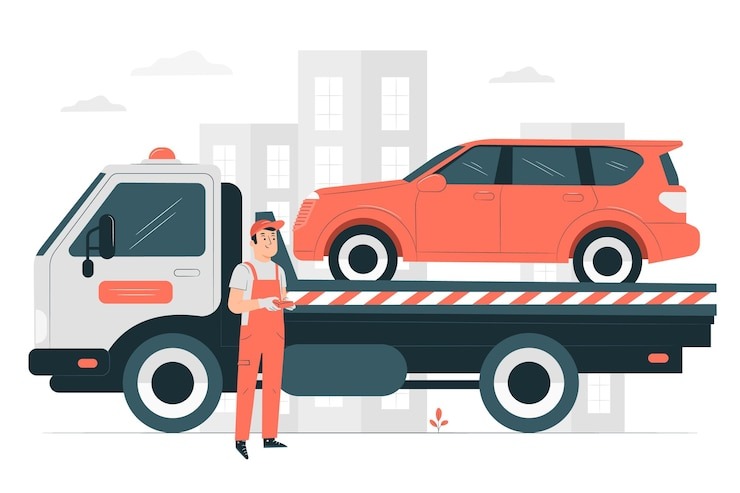Car Carrier Types
Car Carrier Types
Auto transports come in a variety of sizes, from ten-car carriers to rollbacks. The type of auto transport your car will be on depends on how far your car is traveling and the condition of your car.

Rollback auto transports:
A rollback truck is the traditional trucks you see in town, towing cars that have been involved in accidents or that broke down. The vehicle transport industry usually uses the rollback for loading broken cars, or hard to reach cars onto a bigger car carrier. You may see this when the car transport needs to load, say, a non-running car sitting in a driveway, or behind a garage, where the larger vehicle can’t reach it. While the larger vehicle transport may have a wench, it’s not designed to maneuver a car out of a tight place. Instead, the auto shipping company will call a traditional tow truck to extricate the car. They may be used as a car transport in distances under 60 miles, but not much further.
One car flatbed
The one car flatbed has virtually replaced the rollback as the most commonly occurring type of towing vehicle. It has the advantage over the more traditional version in that your car is completely off the ground during transport, reducing the opportunities for damage to occur to our vehicle. It’s also much faster to ship a car this way, because as soon as the auto transport picks up your car, he’s not going to make any more money until he delivers it. This type of car carrier is used most often for trips ranging up to 200 miles. If you’re going over 200 miles, you’ll probably go with an auto transport that carries more cars, to make it worth the driver’s time.
Two to four-car carriers
A two car carrier is just a longer version of the flatbed. They add about 15 feet to is so the driver can load a 2nd vehicle. Then, all the car carrier has to do is find another car traveling in the same direction as the first car contracted. When they add a rack over the cab of the car transport, it makes room to carry another car. This type of car transport is different from the flatbed in that on the flatbed, your car will ride level, while on the 3 to 4 car car carrier, they will travel on an angle. Because of this, a 3 or 4 car carrier will be called a 3 car wedge, or 4 car wedge.
Six to eight car carriers
These auto transports are just short versions of the 9-car transports you’re used to seeing on the highway. These shorter, multi-car transports are popular with drivers because the carry a big load, without being too big so maneuver. There are also fewer vehicles to load and unload, so they can get on the road faster.
Nine to ten car carriers
These big auto transports are used to move new cars from the factory to the car lot. These are probably the ones you see most often on the highway.
One car enclosed
One of the advantages of an enclosed car transport is that the car arrives clean. You also don’t have to worry about rock chips or weather damage. Plus, a one car enclosed will be faster because it’s the only one being picked up and dropped off.
Two to three car enclosed
These auto transports are actually just trailers, sort of like horse trailers. This means that the car carrier is being towed behind the truck. The best part of this is the trailer is close to the ground, so it’s much easier to load and unload cars, since there is only 2 to 4 inches of clearance necessary.
Six car enclosed
These car carriers look like the eighteen wheelers you see on the highway. They’re just like regular semis, with 2 important changes. They have a 2nd floor around 5 ft. higher than the 1st floor. With this two level design, they can carry two rows of 3 vehicles, and all of the vehicles are transported flat. The 2nd difference is that it has an elevator in the form of a lift gate. It’s the same kind of lift gate you see on delivery trucks or moving trucks, except it can lift an entire car to either the first or second level, allowing it to be driven onto the truck. A big advantage is you just need 2 or 3 inches of clearance, so even cars that have been highly modified are shipped without rubbing their undercarriage while being loaded and unloaded.
About Us
Ready to get a car shipping quote
- (510) 358-8241
- Open 24 Hours Mon - Fri
Copyright © 2013 National-AutoTransport.com. All Rights Reserved.